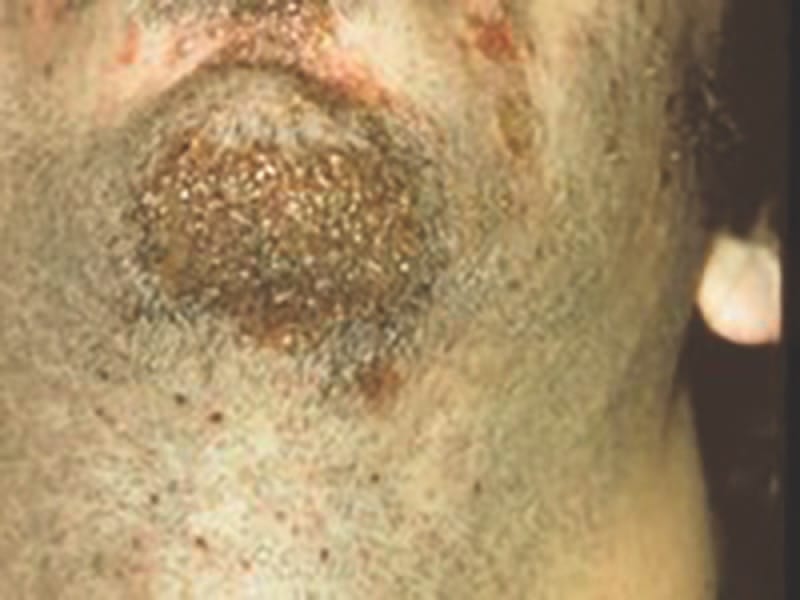Whenever my defence organisation periodical drops into my inbox, it is a priority to open it. It is always instructive to read about cases where things have gone wrong. So frequently, there is a ‘there but for the grace of God’ moment.
In this series, I hope to cover some of the more common mistakes that are made – and indeed, I have made – in the practice of dermatology, in the hope that others may benefit from our discomfort.
Maxims will be interspersed within the text that are always worth reflecting on.
‘More mistakes are made in dermatology by not looking, rather than not knowing!’ So examine the whole integument so you do not miss diagnostic clues.
Blunders with bacteria
With so much of dermatology concentrating on control rather than cure, curable bacterial infections need our utmost concentration.
Case1 – A man has a weeping rash on his chin that started four days ago (figure 1). A putative diagnosis of impetigo was made on the basis of its short duration and the typical honey-coloured crust. As it is extending despite the topic fusidic acid, the diagnosis is now questioned.
If there is ever a question about the diagnosis of impetigo, just take a skin swab. In this case, it showed a fuscidic acid- resistant strain of Staphylococcus aureus (S. Aureus). In some areas where topical fusidic acid use is high, then so are resistant strains. Erythromycin resistance is more common than mupirocin resistance, which is more common than methicillin-resistant S. Aureus (MRSA). If in doubt, be guided by cultural sensitivities.

To continue reading this article, please
sign in or
register.